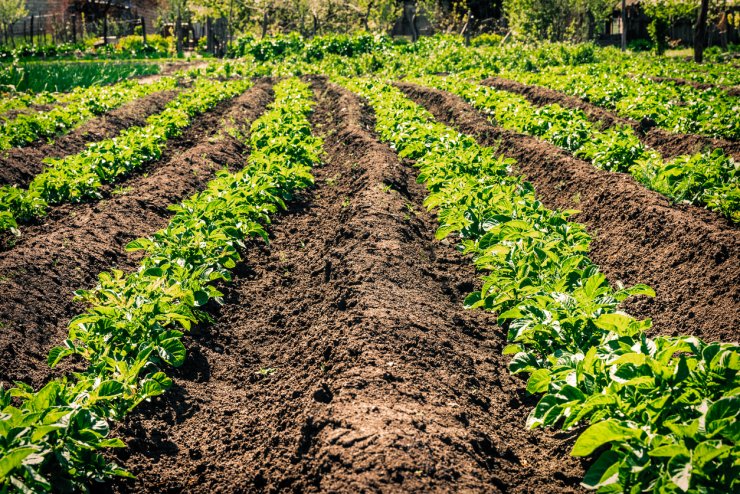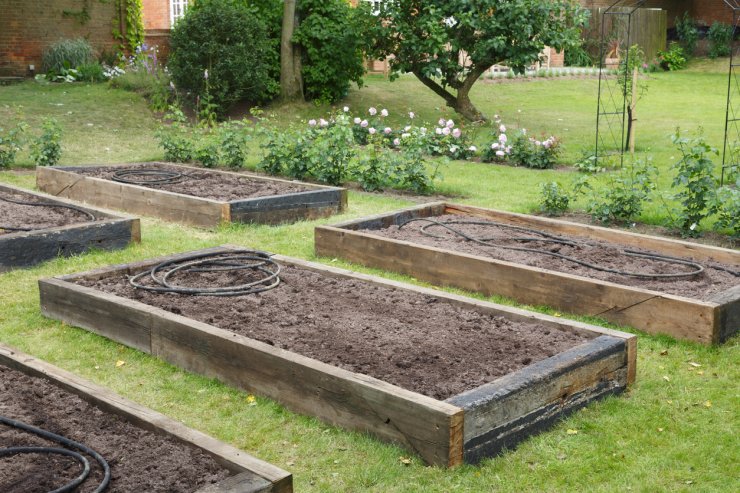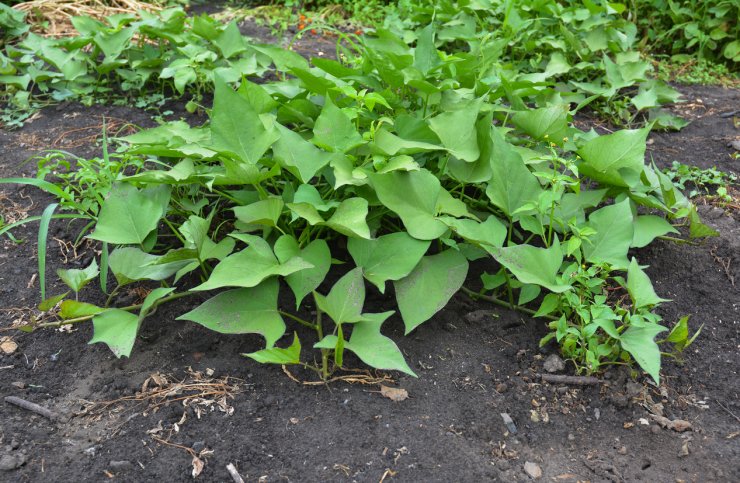
Potatoes growing in a kitchen garden.
Before you start ordering seed potatoes or sweet potato slips, assess your land. If you have open land that meets the requirements of your crops, then all you have to do is test, treat (if needed), till, and plant. But if your soil needs more TLC or you don’t have the room for a rambling backyard garden, it’s possible to raise your potatoes and/or sweet potatoes in raised beds or containers. But since both potatoes and sweet potatoes need some room to roam, a basic garden plot is probably a better bet.
Potato Garden Planning

Empty raised beds ready for planting.
In our history section, we talked about the Great Potato Famine in Ireland. This was the result of a blight—a fungal disease that spread like wildfire once it took hold. Blight spreads through the air, so you really don’t want your crop to develop it. One way to deter the potential for blight, which is a soil borne disease, is to rotate your crops.
The key here is to make sure that you never grow a plant from the nightshade family in the same garden plot two years in a row. That means if you grew tomatoes last year and you’ve decided to give potatoes a try, you absolutely must not plant them in the same plot where the tomatoes grew. The same goes for any member of the nightshade family: peppers, tomatoes, eggplant, and tomatillo.
So what do you plant there? Pretty much anything else, although it would be best for the soil if you planted some sort of legume, like beans or peas. These plants build up nitrogen in the soil, which potatoes deplete. So it’s a win-win.
Sweet Potato Garden Planning

Sweet potato vines.
Sweet potatoes come in two basic types: vine and bush. The vines tend to spread out and cover the soil, but only to a height of about a foot. The bush type (sometimes called bunch type) only spread a few feet, so these are more practical if you have limited space.
Sweet potatoes don’t need a lot of attention, and they need about half the water that potatoes do. Unlike potatoes, sweet potatoes tend to get along with other members of the garden. But in the long run, it will still be a good idea to plan to rotate your crops—and test your soil at least once a year.
How do you prepare your garden to grow your potatoes or sweet potatoes? Please tell us your tips and tricks for creating the ideal potato garden.


 Previous
Previous

